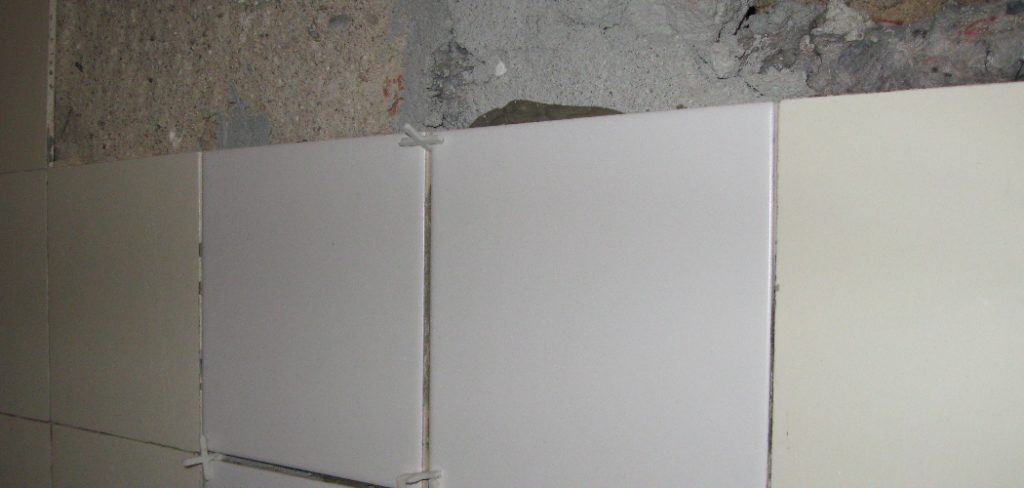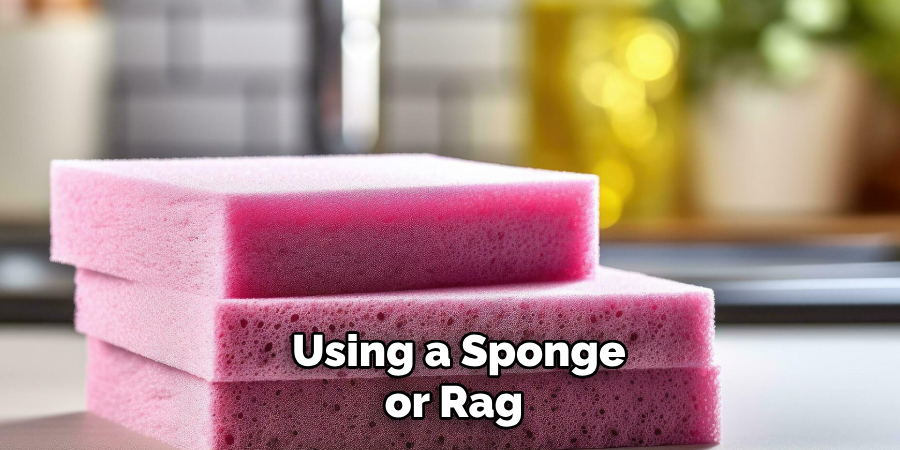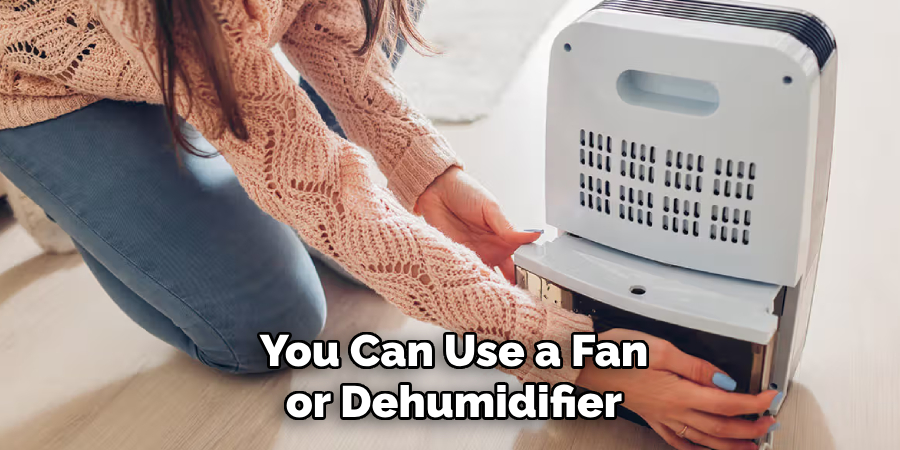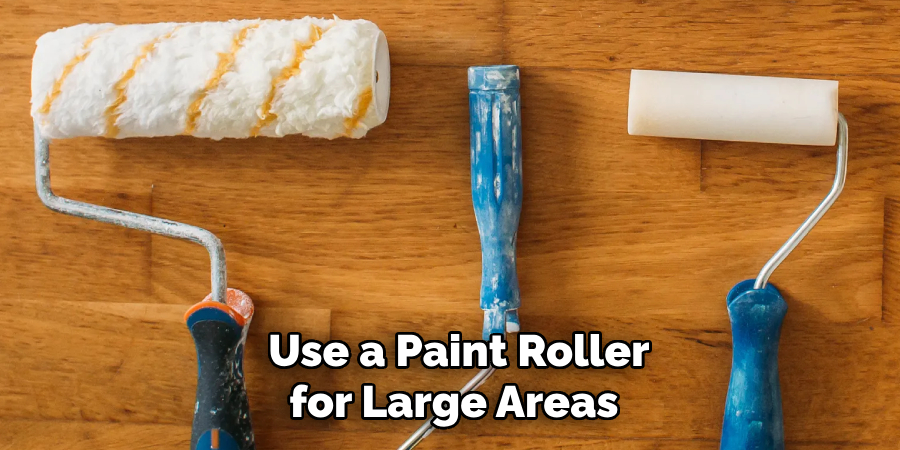Are you tired of staring at the old, outdated tile glue on your walls? Removing wall tile glue can be tedious and time-consuming, but with the right tools and techniques, it can be done efficiently.
How to remove wall tile glue can be a challenging task, especially after you’ve successfully removed the tiles themselves. The leftover adhesive can be stubborn, making it essential to approach the task with the right tools and techniques. Whether you’re planning to repaint, re-tile, or just clean up the wall surface, removing the glue efficiently is crucial for achieving a smooth and professional finish.

This guide will walk you through the steps and considerations to effectively remove wall tile glue, ensuring your walls are prepared for their next transformation.
When Should You Remove Wall Tile Glue?
Before diving into the process of removing wall tile glue, it’s essential to determine whether it’s necessary in the first place. There are a few scenarios that may require you to remove the glue:
- When Replacing Old Tiles: If you’re planning to install new tiles on your walls, removing any leftover adhesive from the previous tiles is crucial. This ensures a clean surface for proper adhesion of the new tiles.
- When Refreshing the Wall Surface: If you want to repaint or re-tile your walls, removing the old tile glue is necessary for achieving a smooth and even finish.
- When Cleaning Up After Tile Removal: Even if you don’t have immediate plans for your walls, removing the leftover tile glue after removing old tiles is still a good idea. This prevents the adhesive from becoming more demanding and more challenging to remove in the future.
These are some common scenarios where removing wall tile glue becomes necessary.
What Will You Need?
Before diving into the removal process, gathering all the necessary tools and materials is essential. Some of the items you’ll need include:
- Protective gear (gloves, goggles, mask)
- Putty knife or scraper
- Heat gun or hairdryer
- Adhesive remover solution
- Sponges or rags
- Bucket with warm water
- Scrub brush

Once you have these items, you’re ready to begin the removal process.
10 Easy Steps on How to Remove Wall Tile Glue
Step 1. Prepare Your Workspace
Clear the area of any furniture, decorations, or items that could be in the way. Ensure the floor is protected from any debris or adhesive residue that may fall during the process. You should lay down a drop cloth or plastic sheet to catch debris and protect your floors. Additionally, ensure the room is well-ventilated to disperse any fumes from using the adhesive remover or heat gun. Turn off any electrical outlets or switches near the workspace to avoid any risk when moisture or heat is involved.
Finally, wear your protective gear, including gloves, goggles, and a mask, to safeguard against sharp tools, dust, and chemical fumes. Being prepared in this manner will ensure a safer and more efficient workflow as you move on to the next steps of removing the wall tile glue.
Step 2. Soften the Glue
To facilitate the removal process, softening the adhesive first is essential. Begin by using a heat gun or hairdryer set to a moderate temperature. Hold it a few inches away from the wall and slowly move it across the glue-covered area. The heat will soften the adhesive, making it easier to scrape off. Be cautious not to overheat one spot to avoid damaging the wall surface. Once the glue becomes pliable, gently scrape it off with a putty knife or scraper, working carefully to avoid gouging the wall. This softening step is crucial in preventing damage to your walls while ensuring an efficient glue removal process.
Step 3. Scrape Off the Glue
Once the glue has been sufficiently softened, it’s time to remove it. Use a putty knife or scraper to carefully and gently scrape the adhesive from the wall surface. Start at the edges and work toward the glued area’s center to prevent further scratching or damaging the wall. Keep the tool at a low angle to avoid gouging the surface, and apply even pressure as you work. For particularly stubborn spots, you may need to reapply heat and repeat the process until the adhesive is entirely removed. Remember to frequently clean your scraping tool to maintain its effectiveness during this step.
Step 4. Apply Adhesive Remover
If remnants of glue remain on the wall after scraping, applying an adhesive remover can help dissolve the stubborn residue. Follow the adhesive remover solution instructions, applying it generously to the remaining glue spots using a sponge or rag. Allow the solution to sit for the recommended period to break down the adhesive. Ensure that the room is adequately ventilated to avoid inhaling any harsh fumes. After the adhesive has softened further, use a scrub brush to gently work the solution into the glue, facilitating easier removal. Be patient during this step, as allowing the adhesive remover to work effectively is critical to achieving a clean surface.

Step 5. Scrub the Surface
After the adhesive remover has had time to work, it’s time to scrub the surface. Use a scrub brush to gently but firmly scrub the area where the adhesive was applied. Dampen the brush with warm water and lift any remaining residue with circular motions. Be sure to apply consistent pressure without being overly aggressive to prevent damage to the wall surface. As you work, rinse the brush frequently in warm water to keep it clean and improve its effectiveness. This step will help remove all traces of the adhesive, resulting in a smooth and clean wall ready for the next stage of your renovation project.
Step 6. Rinse and Inspect the Wall
After thoroughly scrubbing off the adhesive, it’s important to rinse the wall to remove any leftover adhesive remover and debris. Use a clean sponge or rag soaked in warm water and gently wipe down the entire surface to remove any residue. Pay close attention to areas where the adhesive was heavily applied to ensure no traces remain. As you rinse, inspect the wall for any remaining glue spots or damage that might require additional attention.
Step 7. Dry the Wall
After thoroughly rinsing the wall, it’s crucial to ensure the surface is dehydrated before proceeding. Use a clean, dry towel or cloth to pat the wall, absorbing any excess moisture gently. Alternatively, you can use a fan or dehumidifier to speed up drying. Leaving the wall to air dry naturally is also an option, but it may take longer. Ensure the wall is dry to the touch, as any remaining moisture could interfere with the adhesion of any new materials you plan to apply. Properly drying the wall will also help prevent mold or mildew from developing, ensuring that your surface is in the best condition for the next steps of your project.

Step 8. Smooth the Wall Surface
With the wall dry, it’s time to address any rough patches or uneven spots left by the adhesive removal process. Use fine-grit sandpaper to gently sand the entire area, focusing on any areas that feel uneven to the touch. It’s important to be gentle to avoid creating new indentations or damage to the wall. After sanding, wipe the surface with a clean, damp cloth to remove any dust or debris, ensuring a smooth and clean finish. This step is crucial in preparing the wall for any new treatments or coverings you plan to apply, providing a professional and polished result.
Step 9. Prime the Wall
After smoothing the wall surface, it’s essential to apply a primer to prepare it for painting or any new wall coverings. Choose a high-quality primer suited to the paint or covering you intend to use. Use a paint roller or brush to apply an even coat of primer, ensuring complete coverage of the entire wall. Focus on achieving a smooth application, as this will affect the final appearance of your wall once painted. Allow the primer to dry completely per the manufacturer’s instructions before proceeding. Priming the wall helps with the adhesion of paint or coverings and provides an even and uniform finish, ensuring your renovation efforts have a professional-looking outcome.
Step 10. Paint or Apply Wall Covering
With the wall primed and ready, it’s time to complete your renovation by painting or applying your chosen wall covering. If painting, select a high-quality paint that suits your design preferences. Use a paint roller for large areas and a brush for edges and corners, applying the paint in even strokes for a smooth finish. If opting for wallpaper or another wall covering, follow the instructions specific to the material to ensure proper adhesion and alignment. Allow the paint or covering to dry before touching or moving items against the wall fully. This final step is where your efforts unite to transform the space, bringing your vision to life and enhancing the room’s overall aesthetic.

By following these steps, you can effectively remove adhesive from walls and prepare them for your desired renovation.
Conclusion
How to remove wall tile glue can be a meticulous process, but with patience and the proper techniques, you can achieve a smooth and clean surface ready for your renovations.
The key steps include gently scraping off as much glue as possible, using an adhesive remover to dissolve stubborn residues, and thoroughly scrubbing the surface to lift the remaining traces. Proper rinsing and inspection ensure all glue is removed without damaging the wall. Thorough drying prevents moisture issues and prepares the wall for any further work. By smoothing and priming the cleaned wall, you create an ideal base for painting or applying new coverings, ensuring your renovation’s success.
With these techniques, you can confidently tackle adhesive removal and enjoy the transformation of your space.
